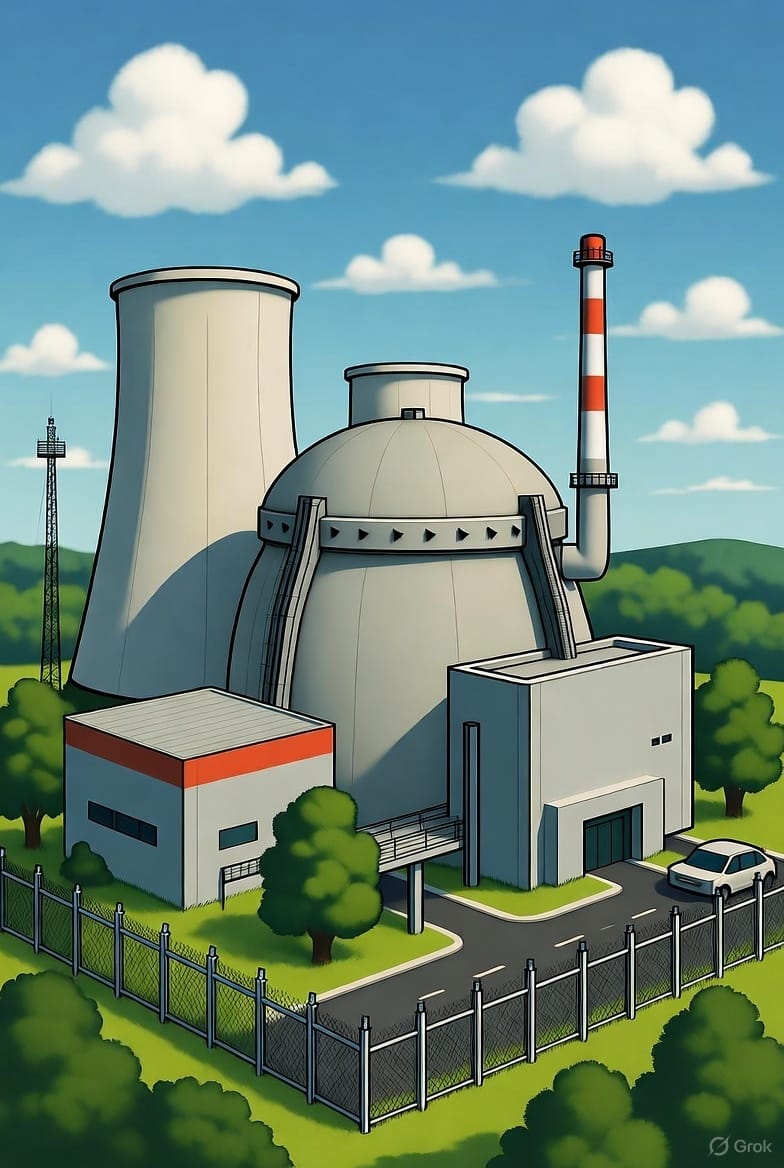- Shortlysts
- Posts
- U.S. Backs $80 Billion Nuclear Deal to Power Nation’s Grid and Strategic Future
U.S. Backs $80 Billion Nuclear Deal to Power Nation’s Grid and Strategic Future
The U.S. is teaming up with Westinghouse to build $80 billion worth of nuclear reactors, aiming to power a growing, tech-heavy economy.

What Happened
The U.S. government has entered into a multibillion-dollar energy deal with Westinghouse Electric, Cameco Corporation, and Brookfield Asset Management to develop and deploy at least $80 billion worth of nuclear reactors across the country, cementing the largest coordinated nuclear energy investment in the United States in decades.
The agreement goes far beyond a private-sector initiative, as the federal government is directly involved in both the financing and permitting. It also stands to receive a 20% share of profits beyond $17.5 billion and could claim a 20% equity stake in Westinghouse if the company reaches a $30 billion valuation by 2029.
While the companies involved are commercial operators, this partnership has national strategic overtones. The reactors are being positioned not just to meet rising energy demand, but to support critical infrastructure tied to defense, data processing, and industrial capacity.
Why It Matters
For years, nuclear development has stagnated due to political hesitation, regulatory hurdles, and fierce debate over cost and safety. This agreement opens up a new path, where the government acts not just as a regulator or funder, but as a participant with real financial skin in the game.
America’s Newest $1B Unicorn Has Arrived
A U.S. startup just hit a $1 billion valuation, joining billion-dollar private companies like SpaceX, OpenAI, and ByteDance.
Unlike those other unicorns, you can invest.*
Over 35,000 people already have. So have industry giants like General Motors and POSCO.
Why all the interest? EnergyX’s patented tech can recover 300% more lithium than traditional methods. That's a big deal, as demand for lithium is expected to 18X current production levels by 2040.
Now, they’re moving to commercial production, tapping into 100,000+ acres of lithium deposits in Chile, a potential $1.1B in annual revenue opportunity, at projected market prices.
Right now, you can invest at $10/share before the price changes on October 30.
Demand for electricity is surging, particularly from AI infrastructure, semiconductor fabrication, advanced manufacturing, and cloud computing. Data centers alone are expected to consume as much power as some states by the end of the decade. Renewable energy can carry part of the load, but it cannot carry all of it, especially when reliability and energy density matter.
Nuclear offers a solution that is carbon-free, baseload-capable, and scalable over time, which is why this deal is so consequential. It’s about building leverage through energy independence, industrial resilience, and national defense readiness.
Additionally, profit-sharing provisions and performance-based equity triggers introduce accountability rarely seen in large energy projects. If these companies deliver, they will be rewarded. If not, the government holds a financial buffer. This model could become a new template for future infrastructure partnerships.
How It Affects You
This deal reshapes how energy infrastructure will develop across the country. It also means bigger investments in physical construction, long-term industrial work, and high-skill careers tied to nuclear operations. Instead of short cycles of funding and uncertainty, the energy sector now has a massive, forward-committed anchor around which new supply chains, training programs, and regional economies can grow.
It also changes how energy reliability and pricing will be managed. As demand from data centers, AI clusters, and defense infrastructure accelerates, the grid needs consistent, high-output power, not just intermittent boosts. Nuclear delivers that. This reduces the likelihood of future service disruptions and the risk of price spikes in energy-intensive regions.
For the public, this is not just a new source of electricity. It is a foundation for future growth. With the government directly involved, the stakes, as well as the standards, are higher. The costs are shared, but so are the long-term gains. This is an energy policy with permanence, not a pilot project or political placeholder.
*This is a paid advertisement for EnergyX's Regulation A+ Offering. Please read the offering circular at invest.energyx.com/. Under Regulation A+, a company has the ability to change its share price by up to 20%, without requalifying the offering with the SEC.
